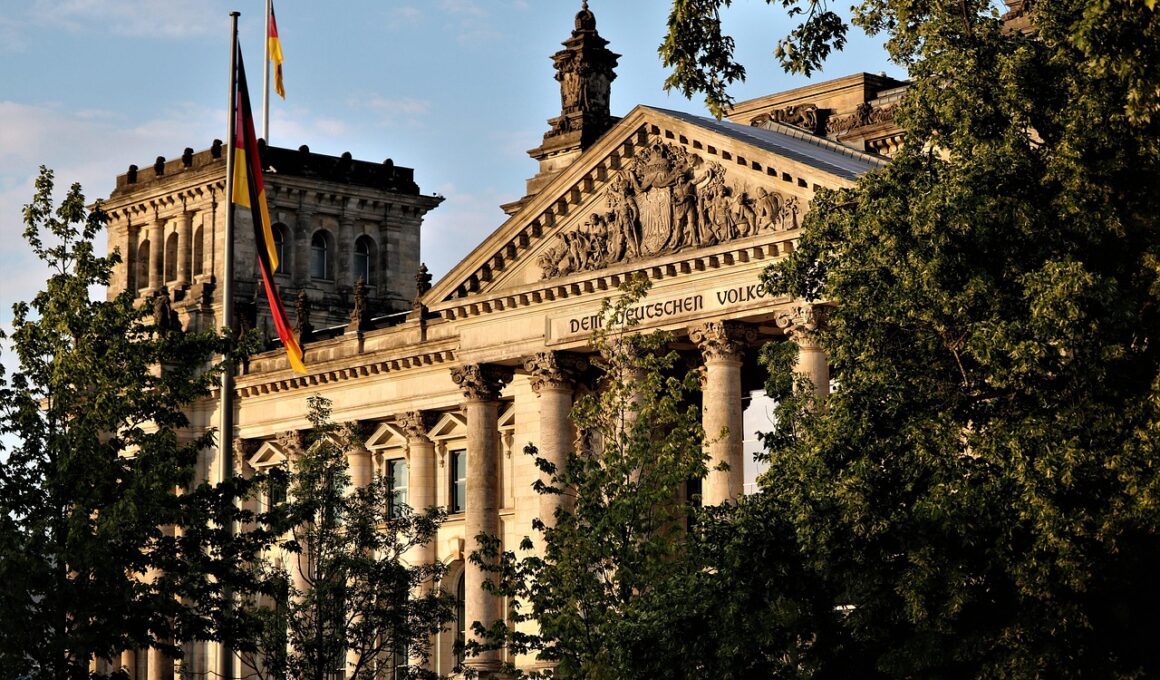Government Arts Funding Policies: What Artists Need to Know
Understanding government arts funding policies is essential for artists seeking financial support. Various programs are available to help artists, organizations, and cultural institutions thrive. These funding opportunities can support projects ranging from visual arts to community-based performances. It is crucial to research specific grants to determine eligibility criteria and application processes. Various governmental organizations, both at the state and federal levels, offer funding options that can vary significantly in scope and availability. Artists should stay informed on the latest funding announcements and policies. The competitive nature of these grants means that artists must present compelling proposals to stand out among applicants. Each grant may have its unique focus, whether promoting diversity in arts or supporting emerging artists. Artists may also need to demonstrate how their projects serve the community or contribute to cultural enrichment. To access these funds, a solid understanding of the grant’s goals and requirements is vital. Leveraging resources such as artistic networks or local cultural councils can provide valuable insights and connections in this landscape.
Applying for government arts funding grants requires careful attention to detail and follow-up. Artists should meticulously review application guidelines to ensure compliance. In addition, they should prepare all necessary documentation, such as project narratives, budgets, and supporting materials. This thorough preparation can significantly strengthen applications and improve chances of funding approval. Deadlines in grant cycles can be stringent, which emphasizes the importance of time management and organization. Artists must devote adequate time to crafting their applications, ensuring clarity and persuasion in their writing. A successful grant proposal goes beyond basic requirements; it should also convey passion and vision. Seeking feedback from peers or mentors can deliver valuable perspectives and suggestions for enhancement. Artists may also need to articulate how their proposed work aligns with the funding agency’s objectives. Building partnerships with other artists or organizations can further demonstrate collaborative efforts and strengthen proposals. Additionally, presenting methods to evaluate project success can add credibility to the application. Once submitted, staying engaged during the review process can help address any questions that arise from grant administrators.
Types of Government Grants for Arts and Culture
The landscape of government grants for arts and culture is diverse, encompassing various types and categories. Federal grants typically offer larger funding amounts but may be highly competitive. These grants are often allocated by agencies such as the National Endowment for the Arts (NEA) or state arts councils. Local governments also establish grants to enhance community engagement, often aimed at supporting grassroots projects or initiatives. Some grants specifically target individual artists, recognizing their contributions to cultural expression. These opportunities can help sustain creative practices and enable artists to pursue ambitious projects. Nonprofit organizations in the arts can also access funding through grants tailored to support operational costs or program development. Special initiatives, focused on advancing equity and inclusion in the arts, may provide additional funding avenues. These grants can prioritize minority or underserved artists. The application process can vary, with some grants requesting letters of intent while others require full proposals initially. Therefore, familiarity with the specific requirements of each grant can aid in tailoring applications effectively.
Networking and community outreach are essential elements for artists applying for grants. Engaging with other artists, arts organizations, and cultural institutions can reveal funding sources that may not be widely known. Building a reputation within local arts communities can result in collaborative projects that strengthen grant proposals. Actively participating in workshops and networking events can help artists learn from successful grant winners. Furthermore, establishing an online presence, including professional social media profiles or portfolios, can showcase artistic work. This visibility can attract the attention of potential funders looking for compelling projects to support. Artists who demonstrate their impact can effectively communicate their vision to granting organizations. Continuous engagement with the community ensures that artists understand the local cultural landscape, thereby enhancing the relevance of their proposals. Additionally, artists should consider connecting with mentors who have previously received grants or participated in panel reviews. Their insights can provide critical information regarding what evaluators look for in successful applications. Overall, proactive networking can build essential relationships crucial for sustaining artistic careers in this competitive funding environment.
The Importance of Evaluating Your Grants
Evaluating project outcomes is a critical aspect of managing government grant funding. Grant recipients often need to report on their progress and the impact of their projects. This requirement can include providing quantitative data, such as audience engagement numbers or qualitative assessments like audience feedback. Establishing clear evaluation metrics before the project begins is crucial. It helps track successes and identifies areas for improvement. Artists can create evaluation frameworks that outline goals and desired outcomes, allowing for structured assessments throughout the project lifecycle. This reflective practice not only aids in fulfilling grant obligations but also enhances artistic development. An evaluation can highlight best practices and inform future projects, contributing to an artist’s growth. In some cases, knowing how to measure a project’s success strengthens future grant applications. Funders appreciate applicants who embrace accountability and demonstrate learning. Aligning personal artistic goals with measurable outcomes can result in a coherent narrative that is appealing to funding agencies. Consequently, a well-thought-out evaluation plan signifies professionalism and commitment to the art-creating process.
One crucial consideration for artists seeking government funding is the reporting requirements post-project completion. Most grants require detailed final reports that outline how funds were utilized and what outcomes were achieved. This process can seem daunting but is critical in building credibility with funding organizations. By providing transparent accounts of project successes and challenges, artists establish a solid reputation. Additionally, effective reporting can lead to future funding opportunities and ongoing support. For many grants, documentation should include budget reconciliations and qualitative assessments of project impact. Artists should strive to create reports that are engaging, summarizing both numerical data and personal stories connected to the project’s experience. A well-prepared report not only meets the funder’s expectations but can act as powerful evidence of the artist’s capability and professional growth. Many successful applicants also share the outcomes through public visibility, such as exhibitions or performances. This strategy showcases the funded work and creates pathways for community dialogue, ultimately enhancing the artist’s profile within the arts ecosystem. Adapting to these reporting protocols also facilitates learning experiences beneficial for future endeavors.
Conclusion: Navigating the Grant Landscape
Navigating the complex landscape of government arts funding involves persistence and adaptability. Artists must remain vigilant about deadlines, eligibility requirements, and application processes. It is vital for artists to dedicate time to continuously educate themselves on the evolving funding environment. One effective approach is to join professional organizations or subscribe to newsletters that provide up-to-date information on available grants. Moreover, embracing the art of storytelling within applications creates a connection between artists and funders. Artists should feel empowered to share their creative journeys and the meaningful impact of their projects on communities. Understanding the priority areas of funding organizations can lead to more compelling applications that align closely with their strategic goals. Moreover, artists should embrace collaboration not only to enhance proposals but also to expand their creative horizons. Seeking partnerships with other artists or organizations can add value to grant applications and open doors for collective opportunities. By actively engaging with the arts community and utilizing resources effectively, artists can unlock the funding they need to foster creativity and sustain their careers.
Success in securing government arts funding grants requires resilience and commitment from artists. The process can often be lengthy and competitive, but the rewards can significantly impact an artist’s career. Artists should approach grant applications with a strategic mindset, considering not only the funding requirements but also how the grant can advance their artistic goals. Continuous learning and adaptation in response to feedback play important roles in this journey. Ultimately, understanding the mechanisms behind grant funding makes it possible for artists to leverage these opportunities more effectively. Artists who embrace these strategies are more likely to succeed while navigating governmental funding structures. Building strong connections within the arts community and understanding the needs of potential funders enable artists to align their proposals with current cultural trends. By taking the necessary steps before, during, and after the grant application process, artists can enhance their chances of obtaining much-needed support. Conveying authenticity in their artistic expressions will resonate with evaluators, establishing a compelling case for funding. In summary, understanding government arts funding policies is crucial for any artist looking to thrive in the cultural landscape.


